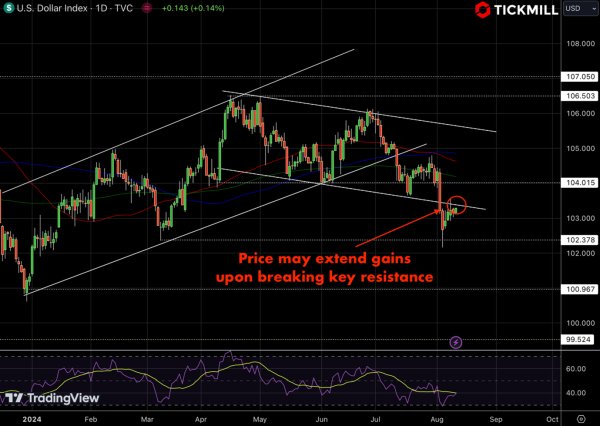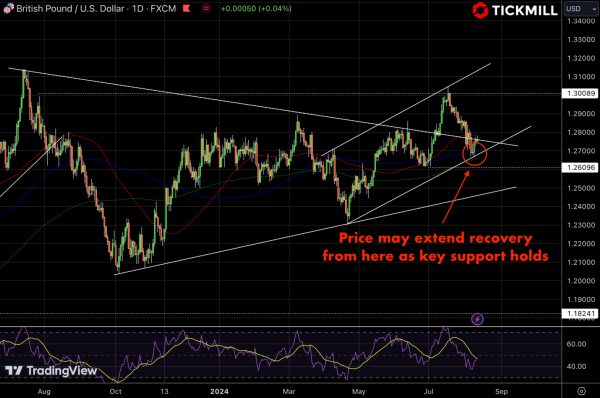US Dollar Holds Steady Ahead of Key Inflation Data; Sterling Surges as UK Awaits Crucial Economic Reports
The US dollar is holding its ground, showing modest strength against most of its counterparts. All eyes are trained on the upcoming US inflation data for July, set to drop on Wednesday. This will be the week’s main event, potentially stirring the waters for the greenback and broader markets.

Monday ushers in a relatively quiet start, with little in the way of earth-shattering economic data. The US Treasury is making its routine trip back to the market, offering short-term bills. While these auctions are usually routine, traders are keeping a cautious eye, especially given the volatile shifts in yields observed last week.
But the real drama will unfold midweek. Besides the critical Consumer Price Index release on Wednesday, Thursday’s US Retail Sales figures for July will also be under scrutiny. Together, these data points will be pivotal in shaping market expectations for the Federal Reserve’s next move.
Speaking of the Fed, the mood among policymakers is one of cautious optimism. Fed Governor Michelle Bowman’s recent remarks at the Kansas Bankers Association underscore this sentiment. She hinted that the Fed might soon be ready to ease up on its tightening cycle, provided inflation continues its downward trajectory towards the 2% target. However, Bowman was clear about the need for patience, emphasizing that the Fed won’t jump the gun based on one-off data points. The market, however, seems to be hedging its bets, with interest rate futures showing a roughly even split between a 25 basis point (bps) and a 50 bps rate cut in September. November's outlook remains murky, with traders penciling in various scenarios ranging from modest to aggressive easing.
Across the Atlantic, the Pound Sterling is flexing its muscles, outpacing most major currencies with the notable exceptions of the Australian Dollar and the New Zealand Dollar. Sterling's strength is being driven by the anticipation of key economic data from the UK, including the Employment report for the three months ending in June and July’s CPI data, both due in the next two days.

The UK Employment report is expected to reveal a slight uptick in the ILO Unemployment Rate, nudging up to 4.5% from 4.4%. Investors are also laser-focused on the Average Earnings Excluding Bonuses data—a critical indicator of wage growth that has been fueling inflation, particularly in the service sector. Market expectations suggest a sharp deceleration in wage growth to 4.6% from 5.7%. Should this forecast materialize, it could bolster expectations for the Bank of England (BoE) to pivot toward interest rate cuts sooner rather than later.
However, not everyone is convinced that the inflationary dragon has been slain. BoE MPC member Catherine Mann struck a hawkish tone in her latest comments, warning that both goods and services prices might rise again and that wage pressures could linger for years. Despite headline inflation inching back towards the BoE’s 2% target, Mann’s concerns over persistent inflationary risks highlight the complexity of the current economic landscape.